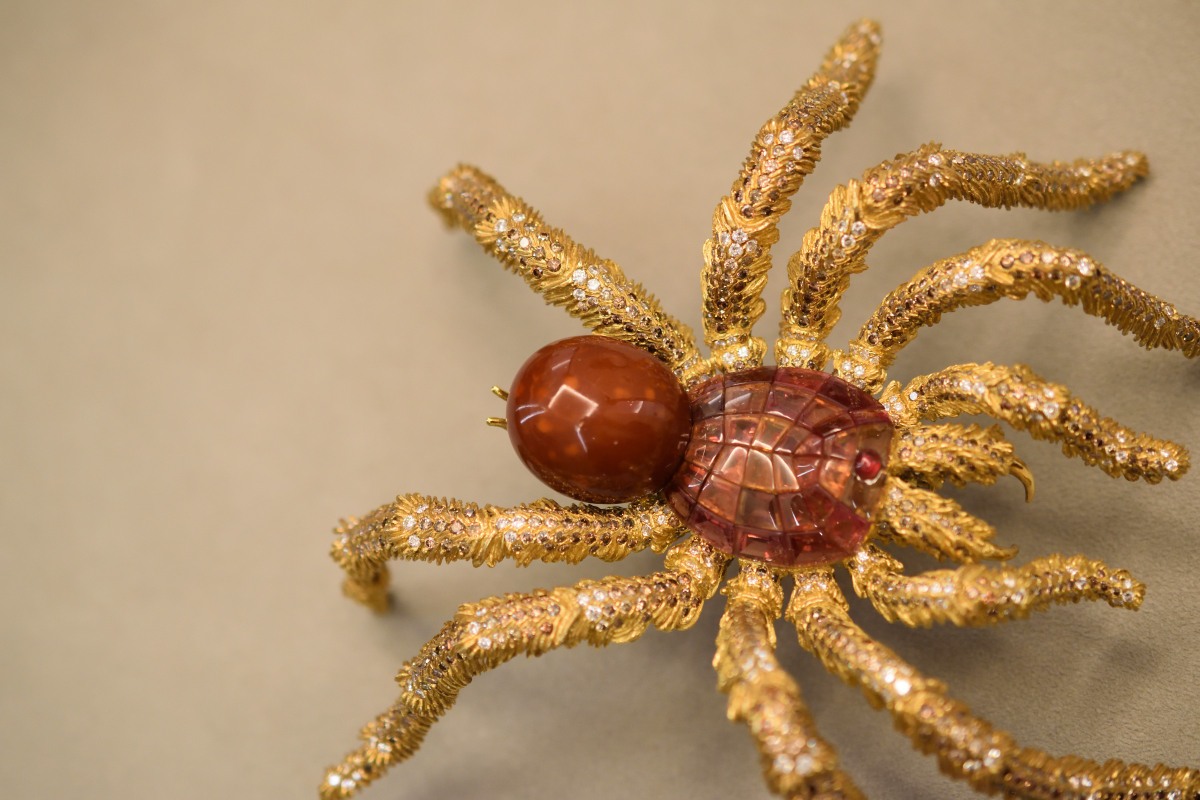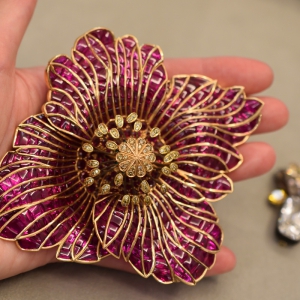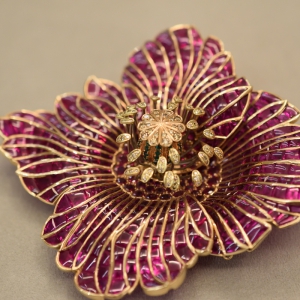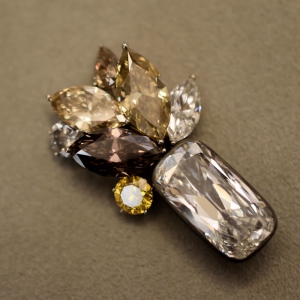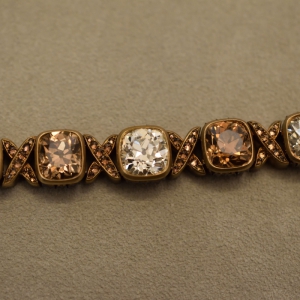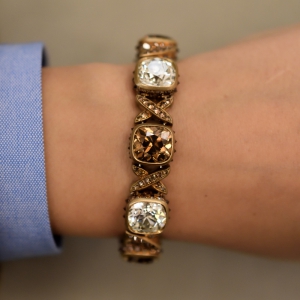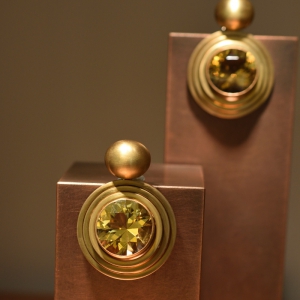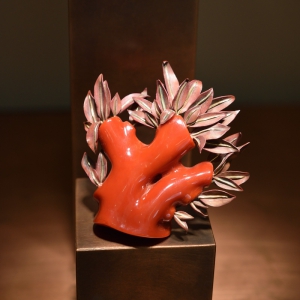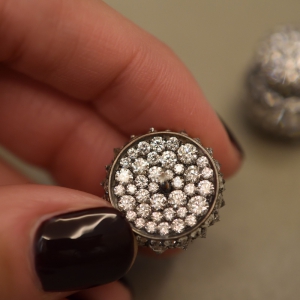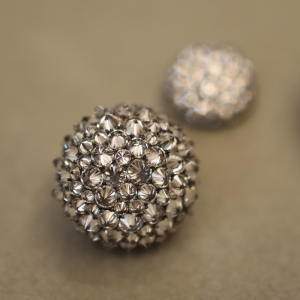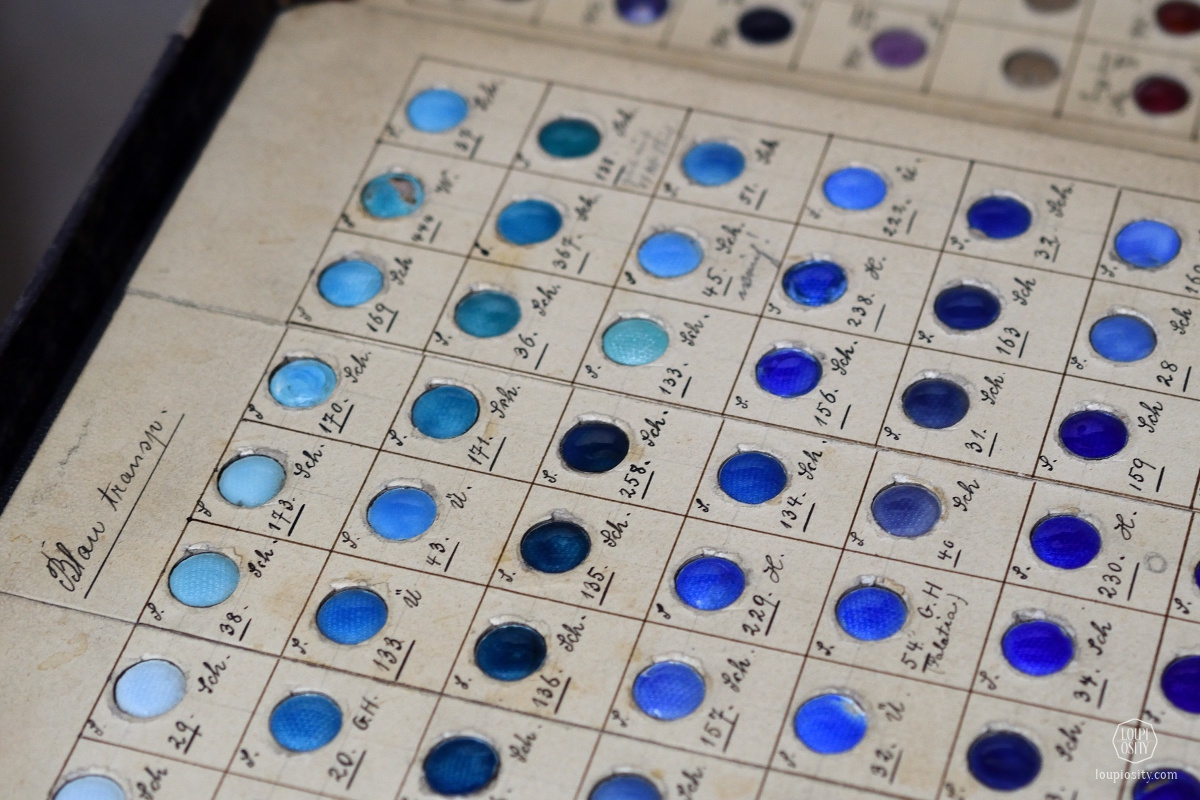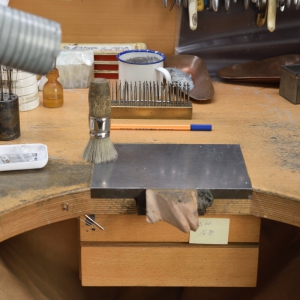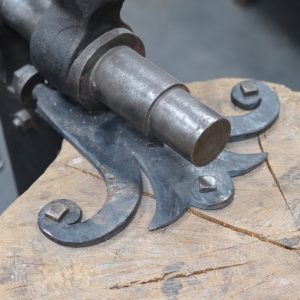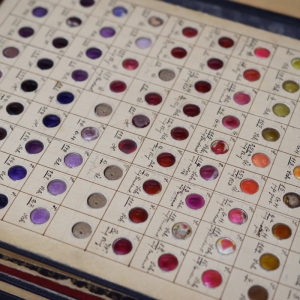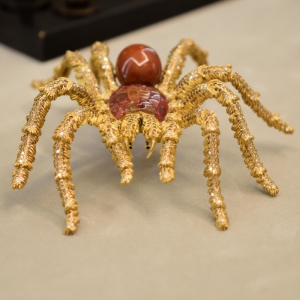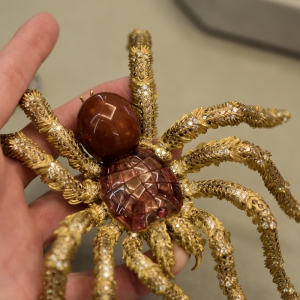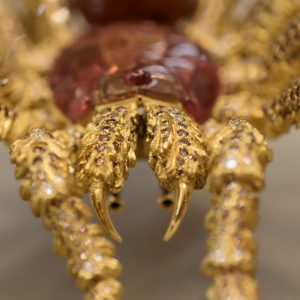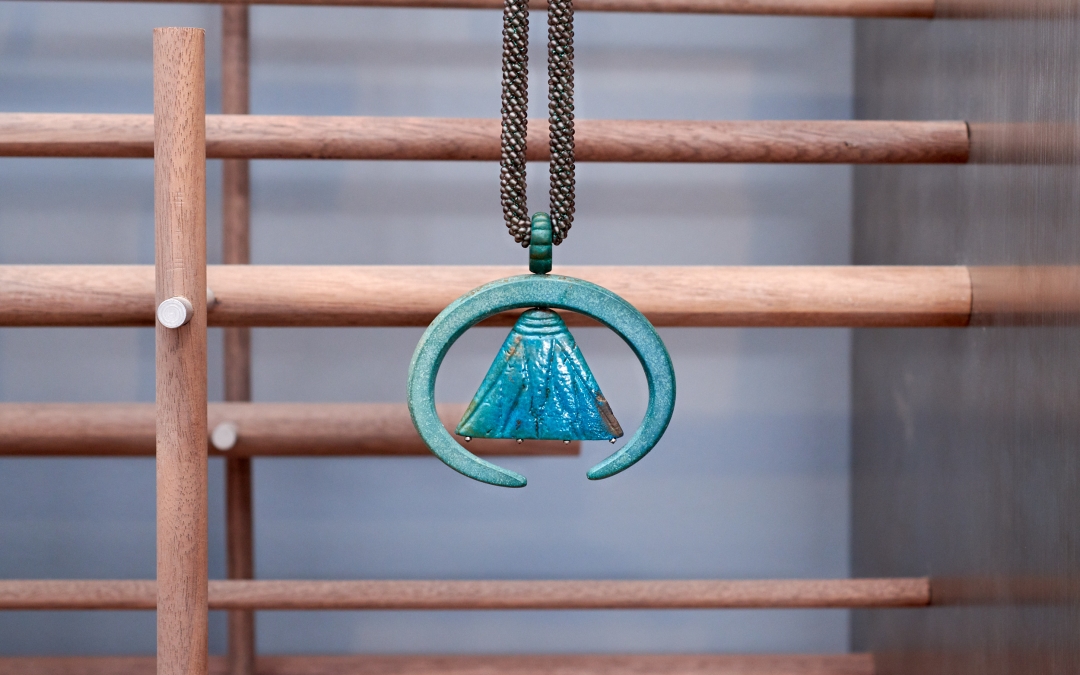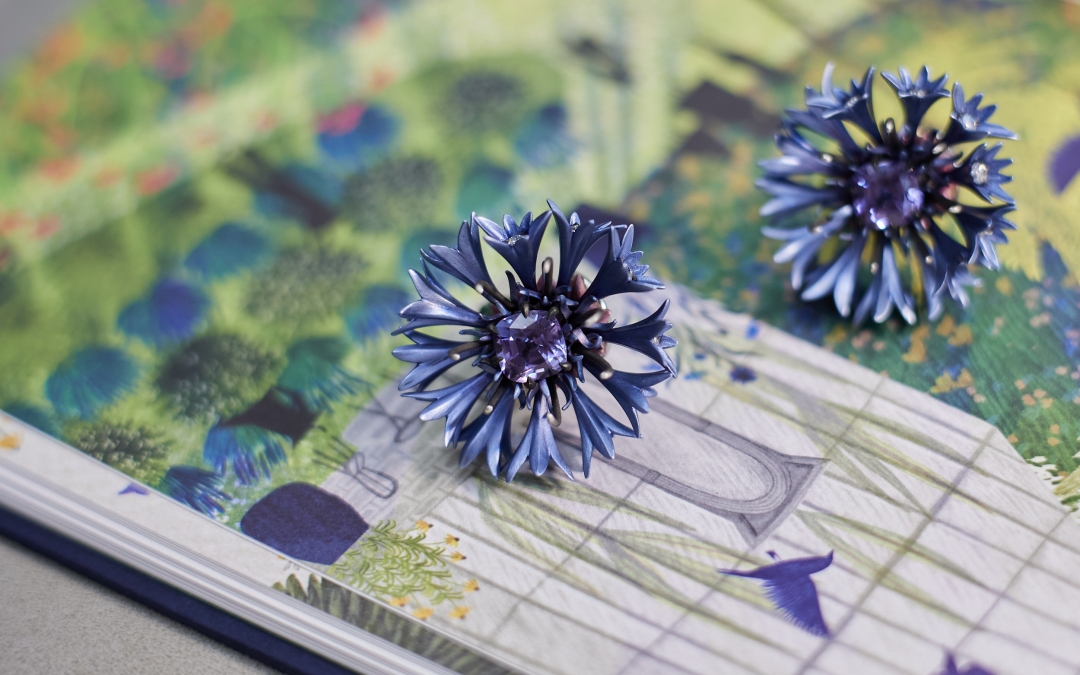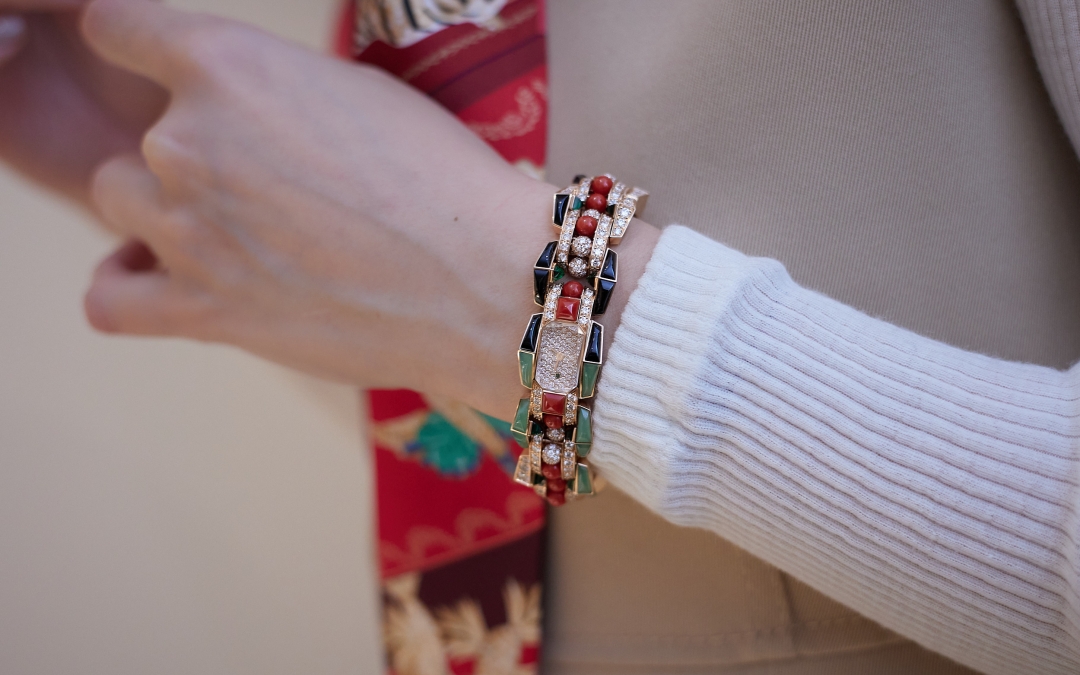One of the most creative jewelery houses led by the 4th generation of the family calls Munich home. I visited Hemmerle in their workshop and boutique, where I was given an exciting guidance by Christian Hemmerle and his wife Yasmin.
The last months were pretty busy for Hemmerle; an exhibition at the Pavilion of Art and Design (PAD) at London’s Berkeley Square, the private viewing at Hôtel Plaza Athénée on Manhattan’s Upper East Side in NYC or the first TEFAF in New York, just to name a few of the most recent events.
I met with the gorgeous Hemmerle jewels first at the Victoria & Albert Museum in 2013 and later in Maastricht, at TEFAF. Their pieces are more wearable objects of art than “just” jewellery. Therefore, art fairs, special collector events and sometimes even museums are the right spaces for their creations.
V&A acquired a Hemmerle bangle for its permanent collection. Another bangle from their “Egyptian Story” project became part of the permanent collection of the Cooper Hewitt Smithsonian Design Museum. Between 12 February – 21 August, 2016, they presented “Beauty—Cooper Hewitt Design Triennial” – the fifth instalment of the museum’s popular contemporary design exhibition series – with Hemmerle among others. The show focused on “designers using rich materials and shimmering, sometimes deceptive, surfaces to create an aura of luxury, glamour, seduction and excess”- as Cooper Hewitt described it.
Rizzoli Publishing House has published some of the most beautiful illustrated books in the world. This September Rizzoli presented the “Jeweler: Masters, Mavericks, and Visionaries of Modern Design” written by Stellene Volandes, foreword by Carolina Herrera. It includes Hemmerle, as “a jewelry dynasty known for moulding materials like copper and aluminium into one-of-a-kind collectibles”.
Last week I was honoured to meet with Christian Hemmerle – the great-grandson of the founder of the fine jewellery house – and his wife Yasmin. She is one of the most authentic ambassadors of the brand, wearing one piece of the already iconic Harmony bangle crafted in dark wood every day – from the same collection that V&A chose to acquire – accompanying it with other Hemmerle pieces.
They just got back from New York full of great experiences, a bit of jet-lag but with energizing passion and enthusiasm for their creations.
We met at the atelier, a charming, renovated town house in the middle of Munich – which offers a spacious and relaxing atmosphere to their goldsmiths. Yasmin and Christian showed me the re-thought workplaces: the artisans all have their own table adjusted to their needs. It is necessary, since working 300-500 hours on a jewel is not unusual. A table is situated in the middle of each room in order to host creative discussions and enable easier communication.
Hemmerle is known for amazing and sometimes unexpected colours. The gem-setters work with a number of different coloured gemstones and materials. The Fig brooch for example includes spinels, colour changing garnets, demantoid garnets, or a bangle is made in copper, white gold, with cognac coloured brown diamonds and tourmalines. Christian displayed gemstone-boxes divided into smaller compartments with a stunning range of diamonds and gemstones in different sizes and colour hues. Some of these gemstones are unbelievably rare and Hemmerle is very picky on quality, therefore it has taken long years to ammass such a stunning collection of gemstones.
Hemmerle’s creations are sometimes very complex and other times minimalist – in all cases the goldsmiths have to find the perfect balance in terms of design, but also weighting. Comfort is among the top characteristics of their creations, for which the right weight balance is necessary. The different stones and materials used require careful calculations and considerations. Luckily, Germans are often associated with thoughtful design and architecture and Hemmerle is no exception to this either.
The family business dates back to 1893 when brothers Joseph and Anton Hemmerle founded it. The fourth generation company has an exceptional heritage and many secrets. The workshop well belongs to these secrets, and it is not frequent to receive a visitor. The basement of the building holds even more, in the form of archives, legacy tools and machines, a great collection of exotic woods in different grains and colours or even old enamel colour palettes. The basement is also home to the loudest machines, just to maintain the amicable relationship with the neighbourhood.
Following the workshop we had a sunny walk to Hemmerle’s boutique on Maximillianstrasse, which opened in 1904.
The Maximilianstrasse – named after King Maximilian II of Bavaria – is one of the four royal avenues of Munich which runs parallel to Prinzregentenstrasse. It is known for its galleries, designer shops, luxury boutiques, jewellery stores.
If you would discover Munich’s hot spots, here and here are a few tips.
The boutique has two shop-windows onto the street, but as you step in, it looks more like a very stylish sanctuary. In 1998 the space was redesigned by Sylveli Hemmerle alongside Tom Postma.
Tom Postma the Amsterdam-based designer started his career as a sculptor, but nowadays he is the artist and architect responsible for designing some of the world’s best art fairs (like Art Basel or TEFAF). He also created a new, light, transparent and inviting space for the Hemmerle presentation at TEFAF 2016 and other fairs.
The outcome is truly unique: “maximalist minimalism” – minimalists shapes and objects with a generous high-end use of materials. White, cream and beige colours are all around with a touch of dark tones, like two big desks and the two original ornate columns, preserved from the 19th century. All cabinets can be opened without any visible key or keyholes, which allows an uninterrupted view of the jewels.
The exquisite boutique is also the nest of the amazing Tarantula brooch. The love and fear jewellery is from the “Art of Nature” project. I met with it at the “Pearls” exhibition in the Victoria & Albert Museum in London. The Tarantula’s abdomen is made of a 111.76ct dark brown conch pearl – one of the largest and rarest ever found. Other parts of the body are made of natural coloured fancy shaped Umba sapphires (39.84ct of them) and white, yellow, brown diamonds on yellow gold. It was quite an experience to hold it in my hands.
Thank you Hemmerle for the unforgetable day!
Photo credits: Loupiosity.com.
All registered trademarks are property of their respective owners.
All rights reserved.
